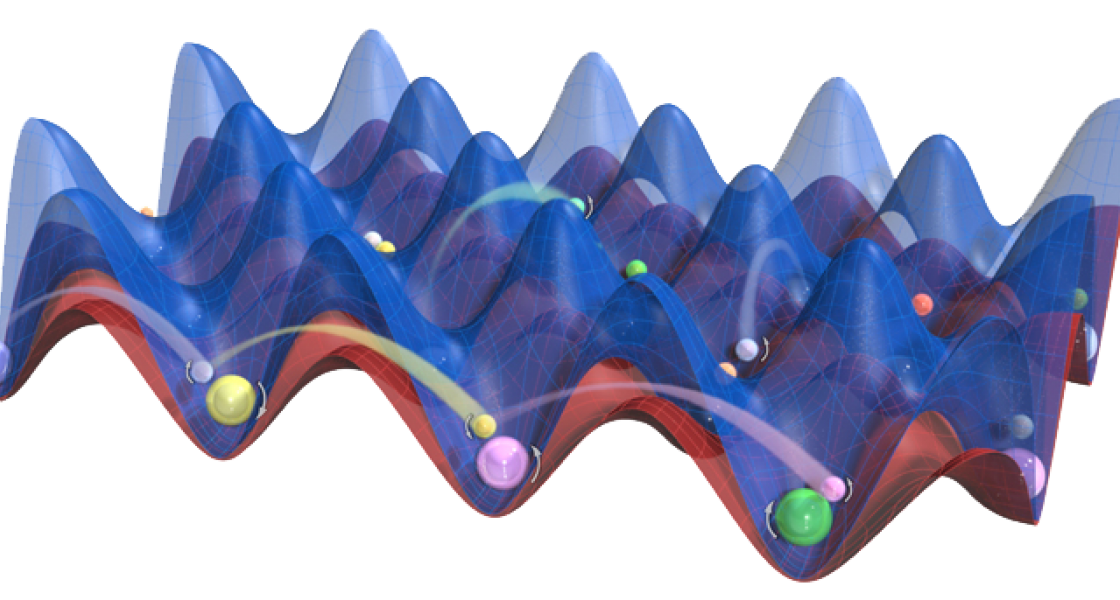Theoretical physicists recently combined two powerful tools for exploring ultracold atomic gases: Optical lattices and Feshbach resonances. Optical lattices are crystals of light formed by interacting laser beams. Feshbach resonances in an ultracold atom gas occur at a particular magnetic field strength and cause ultracold atoms to form very large, loosely associated molecules. However, because lattice atoms interact strongly at a Feshbach resonance, the physics of Feshbach resonances in an optical lattice is quite complicated. Fortunately, a recent analysis of the behavior of two single atoms in a resonant lattice has led to a powerful new mathematical model capable of shedding light on the fundamental physics of the quantum behavior of these systems.
The creators of the new model included senior research associate Javier von Stecher, Fellow Ana Maria Rey, and their colleagues Victor Gurarie and Leo Radzihovsky from the University of Colorado. Von Stecher and his colleagues found that atoms in an optical lattice couldn’t move at any speed they want to. Rather, the atoms were confined to hundreds of discrete energy bands. However, at ultracold temperatures, the atoms moved so slowly, the could only move in the lowest energy band. This restriction made it easier for the researchers to understand their behavior as they interacted with one another.
However, things changed at a Feshbach resonance, which made the atoms interact more strongly. Now the two atoms could collide and form a molecule. And, each of the atoms in the new molecule could end up in hundreds of different energy bands. Interestingly, von Stecher and his colleagues discovered that it was not necessary to describe the molecule as made up of two atoms in different energy bands. Rather, they looked at the molecule as if it were a new particle that could only move in its own energy bands. These molecular bands were different from those of the atoms.
There were as many molecular energy bands as atomic bands. But, there was a key difference: A molecular band would move in response to changes in the magnetic field. The atom bands would not.
Tuning the magnetic field turned out to be the control knob for making things really interesting in a resonant lattice. As a molecule band moved in response to changes in the magnetic field, it inevitably ran into (touched) an atom band. When this happened, a new kind of lattice Feshbach resonance appeared. This resonance created a new, intriguing coupling mechanism for the two atoms that could take place as a molecule band interacted with an atom band.
During this interaction, the molecule band became distorted. Several things could then happen. If the molecule was not moving, it wouldn’t even “see” or interact with the atoms it was passing by. However, if the molecule was moving (even just a little bit), it would “see” the atoms around it. This kind of molecule could break apart into atoms, remain as a molecule, or give rise to another new molecule. In fact, the real quantum state of the molecule under the influence of the Feshbach resonance was not any of these possibilities; rather it was a superposition of all of them at the same time.
The new Feshbach resonance is not only fascinating, but also has given von Stecher and his colleagues the key to creating a new and simpler model that will be capable of describing a more complicated system with many particles. Because the new model makes a complex system easier to understand, it will help researchers better understand the physics of very complex systems such as liquids and solids.




